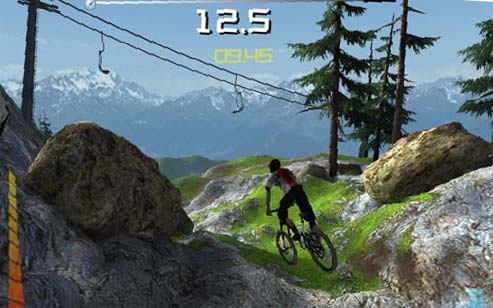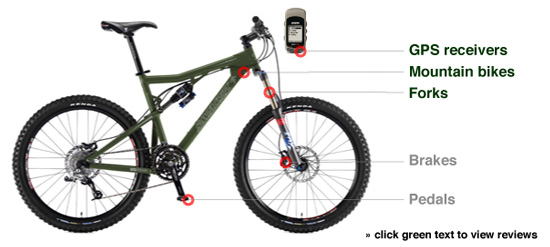Jeff co-founded Singletracks with his wife Leah in 1998 and has been dedicated to sharing the mountain bike information that inspires others to take epic adventures ever since. He started mountain biking in high school and served in the US Air Force before devoting himself full time to Singletracks in 2007.
Though formally educated as an engineer, Jeff began writing stories at an early stage, inspired by his mother who is a longtime accomplished author. He enjoys covering the world of mountain biking from every possible angle, whether it's trails or gear or skills. His goal for every story: that readers learn at least one new thing.
Author snapshot
MTB Background and expertise
- Riding experience: Trail, XC, and bikepacking.
- Mountain biking since: 1992
- Number of products reviewed: ?. I think my first product review for the site was this one for a plastic wallet.
- Current stable: Canyon Neuron, Orange P7 hardtail, and Scott Fun XC
Education and writing experience
- Bachelors of Science in Engineering, Duke University
- Masters of Business Administration, Duke University
- Other publications: Panther Press (Lakeside High School - Augusta, GA), CitySearch.com
For years mountain bike manufacturers have been sponsoring elite level riders as a way of promoting their brands. Everyone knows Lance rode a Trek so that makes Trek bikes cool. But does…
What has four mountain bike tires, disc brakes, no gears, and no pedals? Nope, it's not the pile of cannibalized bikes in your tool shed, it's the R-one 4x4 - the raddest…
Graham at Go Clipless posted recently about capturing flow in mountain bike photography and since I read his post I've been on the lookout for good examples, particularly in MTB videos. The…
If you haven't heard, there are some guys that are attempting to ride their mountain bikes from Alaska to the tip of South America and according to the blog they're down in…
It seems like there was something like this available before but apparently Shimano's "Coasting" technology is news worthy enough for CNET this week. The technology uses a computer chip to control automatic…
I came across a video preview of the Hans Rey Story on YouTube today and I have to say once again, Hans Rey is amazing. There are clips on there of his…
Over the past several years I've tried out a number of topographic software programs for mapping mountain bike trails and GPS data and they've all been seriously flawed in one way or…
The Colorado Spring Gazette had a great article two weeks ago about the South Shore mountain bike trails down in Pueblo, Colorado. The trails are being compared to Fruita and apparently alot…
The Stair Cycle is a bike you "pedal" by stepping up and down and based on the videos it looks fun as hell. There doesn't appear to be a mountain-specific version of…
"I don't care. Whatever you guys want to do.‚" Joey took off his helmet and ran his fingers through his long, curly hair. "If you guys want to go on, Joey and…
Well after a couple years of faithful service, my eTrex Vista GPS finally recorded its last waypoint. I called Garmin to see about a repair (out of warranty of course) and they…
I've ridden a few mountain bike trails over the years (129 trails over 13 years to be exact) and in that time I've formed an opinion or two about what makes a…
The US National Park Service is holding several forums around the country this month and listening to park users of all types (including mountain bikers). The meetings are designed to solicit public…
For most of us mountain bike trails just seem to exist. It's not that we're lazy or ungrateful, it's just that we don't put much thought into the sacrifices that are often…
Spring is in the air here this week and I've been having great luck mapping some of the local mountain bike trails with my GPS (Lake Crabtree, Harris Lake, and Southern Village…
Ah, the seductive powers of the mountain bike. In Sacramento a new program aims to use bicycling (I assume they mean mountain biking, cycling is still a pretty elite sport) to lure…
Mountain Bike Adrenaline looks like a sweet mountain biking video game for the PS2 but it appears to be offered only in France. The sample video clips on the site looks pretty…
In perhaps another example of mountain biking becoming the next golf, Paul Kedrosky writes "Everything I Know About Business I Learned from Mountain-biking." Paul makes some good points about looking where you…
Nice video compilation of mountain bike crashes on Google Video. Actually the vid is a little slow getting started but hold on - there's plenty of pain to keep you entertained.
To whom it may concern: My name is Jeff and I've been riding the same Trek 7000 mountain bike (hardtail) for the past 7 years. The bike has been everywhere as my…
I'm not sure why this is news but I guess things are a little different "Down Under." Apparently a mountain bike was spotted at the bottom of a gnarly cliff and no…
A review of the Garmin Edge 205 GPS.
A couple weeks ago I talked about our (sucky) mountain bike gear review pages on singletracks and now we've done something about it. The new mountain bike review pages are now online…
For some reason these mountain bike job posts always seem to come to me on Fridays -¬† which is too bad since most of us dream of these types of jobs on…
We haven't been officially blogging that long but we've been writing online mountain bike articles on singletracks for years (5 and a half years to be exact). Now you can find all…
When the Olympics come to town it usually means new athletic facilities and sometimes even new mountain bike trails (look at the Georgia International Horse Park trails - you too can ride…
The Fat Cyclist is organizing a raffle to help out Dave Nice, a rider in this year's Great Divide race, a 2,490 mile jaunt from Montana to New Mexico. Nice started the…
North Shore rider Ryan Leech is using his skills on the mountain bike to teach kids important life lessons through his 50-school "Trials of Life" tour this spring. The 28-year old rider…
I can't imagine skiing off a jump like this, let alone hitting the ground on a mountain bike. I also love the reactions of the Richard Simmons look-alike on the ground, classic.
According to an article from New Zealand, mountain biking and cycling in general are becoming more popular with riders of all ages - leading one bike shop owner to agree that "cycling…
I've written a couple times about mountain bike jobs (here and here) and somehow I keep finding other jobs I've overlooked. The latest gig I found is mountain bike photographer and if…
The FBI is on the lookout for what I'm dubbing the "Mountain Bike Bank Robber." Apparently this guy has robbed banks in Ohio, North Carolina, and Kentucky and in each case -…
It happens to everyone at least a couple times a year - you plan a gnarly mountain biking trip for weeks and on the day of your ride, it rains. Or even…
A couple weeks back I wrote about public high schools offering mountain biking courses. Now it's time to talk about what adults can do to learn about mountain biking or improve existing…
For those who haven't heard, the first ever mountain bike race at the north pole will take place on April 7. There are 13 riders signed up for the 2007 race, though…
I was reading an article recently about a former landfill in New Zealand that was being developed into a park with mountain bike trails and I realized something: alot of mountain bike…
Tim Woody knows his mountain bike trails. The Anchorage resident was flipping through the latest issue of Outside magazine when he happened upon an ad for the state of Tennessee: "Knees scraped.…
A while ago I posted a list of bike jobs and apparently I overlooked one mountain biking occupation: mountain bike police. Yep, there's even a Police Mountain Bike Association and this year's…
The Get Outdoors blog had a short post about the Fuego, a foldable mountain bike from Dahon. I personally haven't seen too many foldable mountain bikes and this thing pretty much blew…
The Absa Cape Epic is easily the most extreme mountain bike stage race in the world. The race takes place in South Africa and runs almost 900 km (about 600 miles) with…
The guys over at Blue Collar Mountain Biking always seem to come up with gnarly quick fix ideas and the latest one I read about, using quick release levers to change a…
Beyond the recent cosmetic changes to singletracks, we've also added a ton of new features over the past few weeks. Here's a run down of what's new and what's to come if…
The BBC reports the Tweed Valley in Scotland could be developed into a killer mountain biking destination, provided adequate chairlifts are installed. Currently about 8,000 mountain bikers ride in Innerleithen but officials…
Get out your white sweaters and tennis shorts: The Proving Ground mountain bike country club is set to open in New Jersey this spring. The founder, Lars Tribus, is building the 23…
I just read a blog post by Doug Walsh that was talking about how divisions exist within the mountain biking community along the lines of gear and equipment. Doug pointed to an…
We've been quietly introducing some changes to the look and feel of Singletracks over the past few weeks and it's time to show you what we've done (if you haven't already noticed).…
I'll admit it: I've never been much of a mountain bike gearhead. Like Lance, for me it's not about the bike, and never has been. I think this comes from the fact…
Graham Tracey had a great post on his blog about ice bike racing and how lazy alot of us mountain bikers become in the winter. (by the way, Graham's blog, Go Clipless,…
















 1
1


























